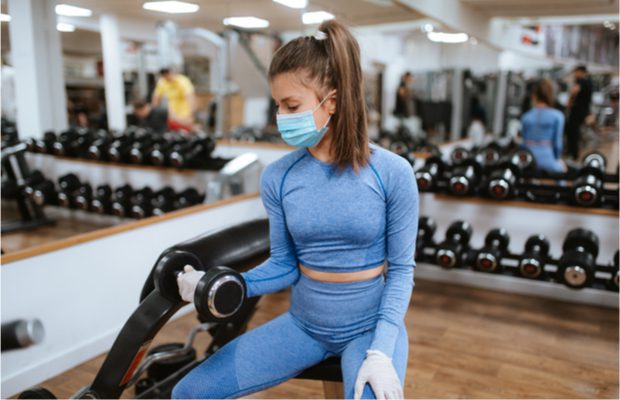
Uncertainty. That is what led Grand Valley State University (GVSU) Recreation and Wellness to prepare for both in-person and virtual programs this fall.
Located in Allendale, Michigan, the GVSU Recreation and Wellness team began to prep for in-person programs as soon as they were told the campus would reopen at the end of August. On the website, you will find drop-down menus for each specific program area, detailing out what safety guidelines will be in place.
“Each program area had plans approved by the end of July and our team was excited to get things in motion,” said Mike Przydzial, the interim director of Recreation and Wellness at GVSU. “When fall rolled around, we felt very confident in the way we were executing our adjusted program, and thrilled we could provide students with in-person opportunities. The benefits of our programs were two-fold: not only were students able to participate safely, but in doing so we were also positively reinforcing the compliance of health policies and behaviors — e.g. wearing a face covering, distancing and completing a daily self-assessment.”
The idea for the detailed plans for each program area was to make students feel as comfortable as possible for what they could expect. “We understand some may have hesitations about jumping back into in-person activities, so we felt displaying our program plans could help put some concerns at-ease and allow for individuals to feel more confident in what we are doing to help keep them safe,” said Przydzial.
However, they kept the mindset they might have to go virtual at some point in the fall semester. One way they did so was by offering free group exercise classes and intramural sports. Przydzial said while both programs typically charge a membership, they didn’t want students to worry about refunds in case they had to go virtual and couldn’t participate in what they had paid for.
And it was good they had prepared. Due to an increase in positive cases on campus and in nearby living communities, the local county issued a “stay-in-place” order until October 2. As such, the recreation programs shifted back to virtual offerings — but they did so without missing a beat.
“We knew there was the opportunity the university could go virtual sometime during the fall semester, so we made adjustments to anticipate another shift which I believe are working well,” said Przydzial. “Not only did we plan to have in-person programs, but we are continuing to expand our virtual offerings throughout each area.”
It has been a disappoint, but one the team faced in order to keep everyone safe. Plus, they are learning along the way on how to continue to serve students better.
“I would say the main takeaways from this entire experience is we’ve had to be more flexible than ever, and need to adjust quicker than we may have been used to in the past whenever necessary to keep providing opportunities for students to be involved and engaged,” said Przydzial.










